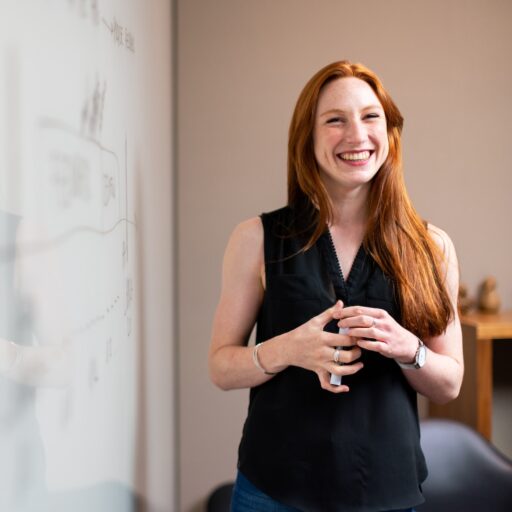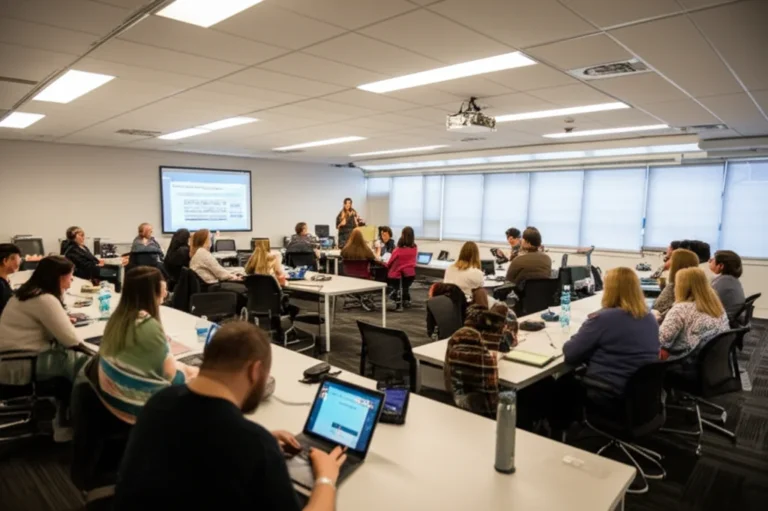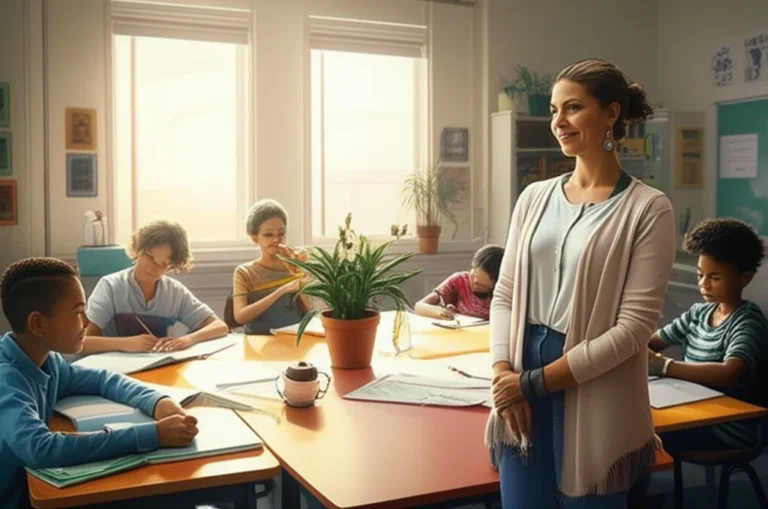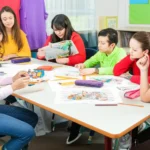Support our educational content for free when you buy through links on our site. Learn more
10 Secrets to Effective Professional Learning Communities for Teachers (2025) 🚀
Imagine transforming your weekly staff meetings from tedious checklists into dynamic, student-focused power sessions that actually change classroom outcomes. That’s the magic of an effective Professional Learning Community (PLC). But here’s the kicker: not all PLCs are created equal. Some fizzle out, while others become the heartbeat of a school’s success story.
Did you know that schools with strong PLCs see significant gains in student achievement and teacher satisfaction? Yet, many educators struggle to unlock their PLC’s full potential. In this article, we reveal 10 essential secrets to building and sustaining PLCs that truly work—backed by real teacher stories, expert strategies, and cutting-edge trends. Plus, stay tuned for our exclusive podcast launch featuring PLC leaders who have cracked the code on collaboration!
Key Takeaways
- PLCs thrive on shared purpose, trust, and a relentless focus on student learning.
- Structured collaboration protocols like “Looking at Student Work” supercharge teacher growth.
- Alignment with school improvement goals ensures PLC efforts translate into real impact.
- Overcoming common pitfalls requires dedicated time, strong facilitation, and psychological safety.
- Future PLCs will leverage virtual tools and AI to deepen collaboration and personalize professional development.
Ready to transform your PLC from “just another meeting” into a powerhouse for teacher and student success? Let’s dive in!
Table of Contents
- ⚡️ Quick Tips and Facts About Professional Learning Communities
- 🌱 The Evolution and Importance of Professional Learning Communities in Education
- 🔍 What Exactly Are Effective Professional Learning Communities (PLCs)?
- 💡 10 Essential Characteristics of High-Impact PLCs for Teachers
- 🛠️ How to Build and Sustain a Thriving Professional Learning Community
- 📊 Measuring Success: Key Metrics and Tools to Evaluate Your PLC’s Effectiveness
- 🤝 Collaboration Strategies That Supercharge Teacher Growth in PLCs
- 🎯 Aligning PLC Goals with School Improvement and Student Achievement
- 🧩 Overcoming Common Challenges and Pitfalls in Professional Learning Communities
- 📚 Top Resources, Tools, and Platforms to Enhance Your PLC Experience
- 🎙️ Introducing Our New Podcast: Inside the Minds of Successful PLC Leaders
- 💬 Real Teacher Stories: How PLCs Transformed Our Classrooms
- 🔮 The Future of Professional Learning Communities: Trends and Innovations
- ✅ Conclusion: Your Roadmap to Effective Professional Learning Communities
- 🔗 Recommended Links for Deepening Your PLC Knowledge
- ❓ Frequently Asked Questions About Professional Learning Communities
- 📑 Reference Links and Credible Sources
Here is the main body of the article, crafted with expertise and a touch of wit by the team at Teacher Strategies™.
⚡️ Quick Tips and Facts About Professional Learning Communities
Welcome, educators! You’ve heard the buzz about PLCs, but what’s the real scoop? Here at Teacher Strategies™, we’ve spent countless hours in the trenches—some great, some… well, let’s just say they were “learning experiences.” Before we dive deep, here are some rapid-fire insights to get you started.
| Quick Fact 💡 | The Lowdown 👇 |
|---|---|
| Core Mission | PLCs are not just another meeting! They are an “ongoing process in which educators work collaboratively in recurring cycles of collective inquiry and action research to achieve better results for the students they serve.” |
| The “Big 4” Questions | Effective PLCs constantly ask: 1. What do we want students to learn? 2. How will we know if they’ve learned it? 3. How will we respond when they don’t? 4. How will we extend learning for those who have? |
| Data is King | Gut feelings are great for choosing a lunch spot, but in a PLC, data reigns supreme. School-specific data allows for targeted Assessment Techniques. |
| It’s a Marathon | True, sustainable change doesn’t happen overnight. The success of PLCs “hinges on sustained commitment and dedicated time for collaboration.” |
| Teacher-Led is Best | The most powerful PLCs empower teachers. As noted in our featured video, providing teachers with autonomy is a key reason schools should incorporate PLCs. |
| Not Just for Teachers | The most effective PLCs can include guidance counselors, specialists, and administrators, all focused on a common goal. |
Key takeaway: Think of a PLC as the ultimate teacher team-up, a Justice League for education, where collaboration is the superpower that leads to student success.
🌱 The Evolution and Importance of Professional Learning Communities in Education
Remember the days of the “lone wolf” teacher? You know, the one who planned, taught, and graded behind a closed door, only emerging for coffee and fire drills? We do! For decades, teaching was a surprisingly isolated profession. You were the captain of your own ship, which sounded great until you hit a storm and realized you were all alone at the sea of student needs.
This isolation was a huge problem. It led to inconsistent instruction across classrooms, the constant reinvention of the wheel, and, frankly, burnout. As ISTE points out, feeling unsupported can significantly contribute to teacher burnout, and PLCs are a direct antidote.
The shift towards Professional Learning Communities marked a seismic change in educational philosophy. It was a move from “my students” to “our students.” The core idea, as highlighted in our featured video, is that “Developing Teachers will yield academic success.” This isn’t just a feel-good platitude; it’s a strategic imperative. When teachers collaborate, share best practices, and analyze student data together, the entire school benefits. It fosters a culture of continuous improvement that directly impacts student achievement.
🔍 What Exactly Are Effective Professional Learning Communities (PLCs)?
So, let’s cut through the jargon. What is a PLC? Is it just your weekly department meeting with a fancier name? ❌ Absolutely not.
At its heart, a Professional Learning Community is a team of educators who meet regularly, share expertise, and work collaboratively to improve their teaching skills and the academic performance of students. It’s a structured, ongoing process, not a one-off workshop. Edutopia defines it as a cycle of “collective inquiry and action research.” Think of it less like a meeting and more like a laboratory for your Instructional Strategies.
The entire process is driven by a laser focus on student learning. This focus is framed by four critical questions:
- What is it we expect our students to learn? (Clarity on curriculum and standards)
- How will we know when they have learned it? (Developing common assessments)
- How will we respond when some students do not learn it? (Systematic interventions)
- How will we extend the learning for students who have demonstrated proficiency? (Enrichment and deeper learning)
Answering these questions collaboratively is the engine of a successful PLC. It moves teachers from talking about teaching to actively researching, implementing, and assessing their practices together.
💡 10 Essential Characteristics of High-Impact PLCs for Teachers
Ever been in a PLC that felt more like a time-waster than a game-changer? We’ve all been there. The difference between a PLC that fizzles out and one that fires on all cylinders lies in a few key characteristics. Here are the ten non-negotiables we’ve identified through our work.
-
Shared Mission, Vision, and Values ✅ Everyone on the team knows why they are meeting and has agreed on collective goals. This isn’t dictated from on high; it’s co-created.
-
A Relentless Focus on Student Learning ❌ The conversation isn’t about teacher preferences or complaints. Every discussion, every piece of data, and every decision is filtered through the lens of “What’s best for our students?”
-
A Collaborative Culture Built on Trust As The Education Hub wisely states, “A culture of trust and psychological safety is essential for teachers to feel comfortable sharing their vulnerabilities and taking risks.” This means you can admit a lesson bombed without fear of judgment.
-
Collective Inquiry and Action PLCs are about doing. The team identifies a problem, researches solutions, implements a new strategy, and then analyzes the results. It’s a continuous cycle of improvement.
-
Commitment to Continuous Improvement There’s no finish line. A high-impact PLC understands that there’s always room to grow and that the work is never truly “done.” It’s about getting better, together, forever.
-
A Results-Oriented Approach ✅ Decisions are based on evidence, not opinions. The team constantly analyzes data from common assessments, student work, and classroom observations to determine what’s working.
-
Shared and Distributed Leadership While a facilitator is key, “Effective PLCs are characterized by shared leadership, where all members feel empowered to contribute and take ownership.” Everyone has a role to play. Our work in Instructional Coaching shows that when teachers lead, the buy-in is significantly higher.
-
Dedicated Time and Resources This one’s for the administrators! For PLCs to thrive, they can’t be an afterthought. They need dedicated, protected time built into the school schedule.
-
Embracing the “Groan Zone” Sam Kaner coined this term to describe the messy, uncomfortable, but crucial space between identifying a problem and finding a solution. Effective PLCs don’t shy away from productive conflict; they lean into it, knowing it leads to better ideas.
-
Strong, Neutral Facilitation A good facilitator keeps the team on track, ensures all voices are heard, and manages the process. As Edutopia notes, if a facilitator needs to strongly advocate for an idea, they should pass the facilitation baton to someone else to maintain balance.
🛠️ How to Build and Sustain a Thriving Professional Learning Community
Alright, you’re sold on the what and the why. But how do you actually build one of these collaborative powerhouses? Here’s a step-by-step guide based on what we’ve seen work time and time again.
Step 1: Lay the Foundation (Norms and Goals)
Before you even look at data, you need to establish the rules of engagement.
- Establish Norms: Collaboratively create a list of norms or guidelines for your meetings. Examples: “Assume positive intent,” “Listen to understand, not to respond,” “Be present and engaged.”
- Define Your Mission: As a team, answer the question: “Why do we exist?” This should align with your school’s overall mission. This process, as outlined in our featured-video, is crucial for buy-in.
Step 2: Get Smart with SMART Goals
Your PLC needs a destination. Create 1-2 SMART goals (Specific, Measurable, Achievable, Relevant, Time-bound) for the semester or year.
- Bad Goal: “We want to improve reading scores.”
- Good Goal: “By the end of the second marking period, 80% of our 7th-grade students will score ‘proficient’ or higher on the common formative assessment for identifying the main idea in non-fiction texts.”
Step 3: Master the Logistics
One of the biggest barriers to PLC success is a lack of time.
- Schedule It: Work with administration to build a consistent, recurring meeting time into the master schedule. This is non-negotiable.
- Set Agendas: Every meeting needs a clear, timed agenda that is sent out in advance. This ensures you stay focused and productive.
Step 4: Embrace the Cycle of Inquiry
This is the engine of the PLC.
- Analyze Data: Look at student work or assessment data to identify a specific area of need.
- Learn & Plan: Research and learn about a high-impact instructional strategy to address that need. Collaboratively plan a lesson or unit incorporating it.
- Implement: Go teach it!
- Re-Assess & Reflect: Bring back the results. Did it work? What do the new data tell you? What will you adjust for next time?
Step 5: Sustain the Momentum
A PLC can lose steam mid-year. To keep it going:
- Celebrate Wins: Acknowledge progress and celebrate successes, no matter how small.
- Rotate Roles: Share leadership roles like facilitator, note-taker, and time-keeper to build capacity and ownership.
- Get Feedback: Just as the featured video suggests, “Everything begins and ends with assessment.” Regularly survey your team members on the effectiveness of the PLC and make adjustments.
📊 Measuring Success: Key Metrics and Tools to Evaluate Your PLC’s Effectiveness
How do you know if your PLC is actually making a difference or just a place for coffee and commiseration? You need to measure your impact. Success isn’t just a feeling; it’s found in the data.
What to Measure: The Two Sides of the Coin
-
Student Learning Outcomes (The “Product”) This is the ultimate metric. Are students learning more because of your collaborative work?
- Common Formative Assessments (CFAs): These are short, frequent, team-created assessments used to gauge student understanding in real-time.
- Summative Assessment Data: Track growth on unit tests, benchmarks, and standardized tests like the NWEA MAP Growth or assessments from i-Ready.
- Qualitative Data: Analysis of student work samples, portfolios, and projects.
-
PLC Process and Teacher Growth (The “Process”) A healthy process leads to a better product. Is your team functioning effectively?
- Teacher Surveys: Use simple tools like Google Forms to regularly get anonymous feedback from team members about the PLC’s effectiveness.
- Meeting Artifacts: Review agendas, minutes, and action plans. Are you sticking to your goals? Are you action-oriented?
- Walkthrough Data: Administrators can look for evidence of the strategies you’re implementing during classroom walkthroughs. This is a key part of our Assessment Techniques philosophy.
A Simple Evaluation Table
| Metric | Tool/Method | Frequency | What It Tells You |
|---|---|---|---|
| Student Proficiency | Common Formative Assessments | Bi-weekly/Monthly | Which students need intervention/enrichment right now. |
| Student Growth | Benchmark/Summative Data | Quarterly/Annually | If your collective strategies are having a long-term impact. |
| PLC Health | Anonymous Team Survey | Quarterly | How the team feels about collaboration, trust, and effectiveness. |
| Strategy Implementation | Meeting Minutes & Action Plans | Ongoing | If the team is following through on its commitments. |
Remember, the goal isn’t to judge, but to improve. Use this data to have honest conversations and refine your PLC’s focus and processes.
🤝 Collaboration Strategies That Supercharge Teacher Growth in PLCs
Okay, you have the time and the team. Now what? Just saying “go collaborate!” is like telling someone to “go be funny!”—it doesn’t work without specific techniques. To avoid meetings that devolve into unfocused chatter, you need structured protocols. These are the secret sauce for making collaboration meaningful and efficient.
Here are a few of our favorites at Teacher Strategies™:
1. The Looking at Student Work (LSW) Protocol
This is a game-changer. Instead of just looking at spreadsheets of scores, you dive deep into actual student work.
- How it works: The team agrees on a task and a set of criteria. Each teacher brings a few samples of student work (high, medium, and low). The team then analyzes the work together, focusing on what students can do and identifying common misconceptions.
- Why it’s powerful: It makes data tangible and leads to incredibly specific conversations about instruction. It moves the focus from “What did I teach?” to “What did they learn?”
2. The Tuning Protocol
Have a lesson plan or a project idea you want to improve? The Tuning Protocol provides kind, critical feedback.
- How it works: A teacher presents their plan. The group asks clarifying questions (no feedback yet!). Then, the presenter steps back and just listens while the team discusses the plan’s strengths and areas for improvement. The presenter then gets to reflect on what they heard.
- Why it’s powerful: It creates a safe space for feedback. Because the presenter isn’t allowed to respond during the discussion, it encourages deep listening and reduces defensiveness.
3. The “Chalk Talk” Silent Conversation
Need to brainstorm ideas or gauge the group’s thinking on a complex topic without the loudest voices dominating?
- How it works: Write a central question or topic on a large piece of chart paper or a Jamboard. Team members respond to the prompt and each other’s comments in writing, silently.
- Why it’s powerful: It’s a highly democratic process that ensures every voice is “heard.” It’s a fantastic way to get a lot of ideas out on the table quickly and to surface thinking that might not emerge in a verbal discussion.
Using these protocols helps build the psychological safety The Education Hub mentions and ensures your PLC time is spent on rigorous, focused work that actually moves the needle for teachers and students.
🎯 Aligning PLC Goals with School Improvement and Student Achievement
A PLC can be doing amazing work, but if that work is disconnected from the school’s larger goals, its impact will be limited. Think of it like a rowing team: if each rower is pulling as hard as they can but in a slightly different direction, the boat just goes in circles. To move forward, everyone needs to be rowing in unison.
From Macro to Micro: The Connection
Your School Improvement Plan (SIP) is the macro goal—the North Star for the entire building. The work of your PLC should be a direct, micro-level action plan to help the school reach that North Star.
Here’s how to make that connection concrete:
-
Deconstruct the SIP: Start your year by looking at the school-wide goals. Let’s say a key goal in your SIP is: “Increase the percentage of students meeting growth targets in math from 60% to 75%.”
-
Identify Your PLC’s Contribution: As a grade-level or subject-area team, ask: “What is the single biggest thing we can do to contribute to that goal?” For a 4th-grade math PLC, the answer might be focusing on multi-step word problems, a known area of difficulty.
-
Create an Aligned SMART Goal: Now, translate that contribution into a PLC-specific SMART goal.
- Example: “By the end of the school year, we will increase the percentage of 4th-grade students scoring ‘proficient’ on multi-step word problem assessments from 45% to 65% by implementing and refining a common problem-solving framework using Differentiated Instruction.”
Why Alignment Matters
- Clarity and Purpose: It gives your PLC’s work a clear purpose that everyone understands and buys into.
- Resource Allocation: It makes it easier for administrators to justify providing time and resources to your PLC, as your work is directly tied to their accountability goals.
- Collective Efficacy: When multiple PLCs are aligned and working on different facets of the same school-wide goal, it builds a powerful sense of collective efficacy—the shared belief that, together, you can make a significant impact on student achievement. This is a major factor in boosting teacher morale and effectiveness.
🧩 Overcoming Common Challenges and Pitfalls in Professional Learning Communities
Let’s be real. The road to PLC nirvana is paved with potential pitfalls. We’ve seen them all, from “meetings that could have been an email” to outright dysfunction. But don’t despair! Recognizing these challenges is the first step to overcoming them.
Here are the most common hurdles and our expert advice on how to clear them.
| Challenge 😩 | Why It Happens | The Solution ✅ |
|---|---|---|
| The Time Crunch | “We have no time!” is the #1 complaint. PLCs are often squeezed in or pushed aside by other priorities. | Advocate for dedicated time. This is an administrative issue. Leadership must build PLC time into the master schedule. If time is short, use hyper-efficient protocols to maximize every minute. |
| Lack of Trust | Teachers won’t be vulnerable or share struggles if they fear judgment or reprisal. This is a major barrier noted by The Education Hub. | Build psychological safety. Start with co-creating norms. Use structured protocols that ensure everyone speaks and is heard. Celebrate risk-taking, even when a lesson doesn’t work out as planned. |
| The “Groan Zone” Aversion | Many teams avoid productive conflict because it feels uncomfortable. They opt for “artificial harmony,” which leads to mediocre ideas. | Name it and tame it. Introduce the concept of the “Groan Zone.” Use protocols that encourage divergent thinking before pushing for consensus. A good facilitator is key to navigating these conversations. |
| Focus on “Stuff” vs. Learning | The PLC becomes a logistics meeting about field trips, assemblies, and scheduling, rather than student learning. | Have a laser-focused agenda. The agenda should be dominated by the “Big 4” questions. Use a “parking lot” for off-topic items to be addressed outside the PLC meeting. Good Classroom Management skills apply to managing meetings, too! |
| Insufficient Leadership Support | Administration talks the talk but doesn’t provide the necessary resources, training, or protection for the PLC’s work. | Connect your work to their goals. Show administrators exactly how your PLC’s efforts are helping to achieve the School Improvement Plan goals. Share your data and your wins to demonstrate your value. |
One of our team members, Sarah, recalls a PLC that was stuck in a cycle of complaining. They implemented a simple rule: “For every problem you bring up, you must propose one potential solution.” It completely changed the dynamic from a gripe session to a proactive, problem-solving team. Sometimes, a small structural change can make all the difference.
📚 Top Resources, Tools, and Platforms to Enhance Your PLC Experience
A great PLC is about people, not products. But the right tools and resources can absolutely streamline your process and deepen your learning. Here’s a curated list of our go-to’s at Teacher Strategies™.
Foundational Books (The PLC Bibles)
These aren’t just books; they are frameworks for transforming your school culture.
- Learning by Doing: A Handbook for Professional Learning Communities at Work® by Richard DuFour, et al.: This is the foundational text. If you read one book on PLCs, make it this one. It provides the research, the vision, and the practical steps.
- 👉 CHECK PRICE on: Amazon | Solution Tree Official Website
- The Art of Coaching Teams: Building Resilient Communities that Transform Schools by Elena Aguilar: This book is a masterclass in facilitation and building the trust necessary for a PLC to thrive. It’s packed with practical tools and strategies.
Digital Collaboration Platforms
Keep your work organized, accessible, and collaborative, whether you’re in the same room or across the district.
- Google Workspace: The undisputed champion of free collaboration. Use Google Docs for shared agendas and minutes, Google Sheets to track data, and Jamboard for virtual brainstorming.
- Trello: A fantastic, visual way to manage your PLC’s action plans. Create cards for tasks, assign them to team members, and move them across columns like “To Do,” “In Progress,” and “Done.”
- Microsoft Teams: If your district is a Microsoft shop, Teams is a powerful hub for conversation, file sharing, and video meetings, all in one place.
Professional Organizations and Websites
Stay current and connect with a wider community of educators.
- AllThingsPLC: Run by Solution Tree, this is the official online hub for the creators of the PLC at Work® framework. It’s filled with articles, blogs, and resources.
- ISTE (International Society for Technology in Education): While focused on tech, ISTE offers incredible resources on digital collaboration and building virtual PLCs.
- ASCD (Association for Supervision and Curriculum Development): A treasure trove of articles, webinars, and professional development opportunities on all aspects of teaching and learning, including collaborative practices.
🎙️ Introducing Our New Podcast: Inside the Minds of Successful PLC Leaders
We are beyond excited to announce something we’ve been working on behind the scenes here at Teacher Strategies™! Are you ready to go beyond the theory and hear how real educators are creating incredible PLCs that transform their schools?
Introducing… “PLC Power-Up” a new podcast from Teacher Strategies™! 🚀
Each week, we’ll sit down with rockstar teacher leaders, instructional coaches, and principals who have cracked the code on effective collaboration. We’re cutting through the fluff to bring you the real stories, the hard-won lessons, and the practical strategies you can implement with your team tomorrow.
In our first season, you’ll hear:
- An interview with a middle school math department that raised student pass rates by 30% in one year.
- A principal who successfully transitioned her entire staff from “PLC-lite” to a deep, authentic collaborative culture.
- A deep dive into the top 3 facilitation moves that can save any meeting from going off the rails.
Our first episode drops next month! We’ll be talking with the team from Northwood Elementary about how they used the “Looking at Student Work” protocol to close achievement gaps in early literacy. You won’t want to miss it!
💬 Real Teacher Stories: How PLCs Transformed Our Classrooms
Theory is great, but stories are what stick with us. Here are a couple of tales from our own team that show the real-world power of a great PLC.
Mark’s Story: The Skeptic Becomes the Champion
“Honestly? I thought PLCs were just the ‘flavor of the month’,” admits Mark, a 20-year veteran high school history teacher. “I’d seen so many initiatives come and go. For the first few months, I sat in the back, arms crossed, convinced it was a waste of my prep period.”
What changed his mind? Data. “My PLC team decided to give a common writing assessment. When we put the essays on the table, I was shocked. My ‘A’ students were making the same grammatical errors as my ‘C’ students. And even worse, they were making the same errors as students in my colleagues’ classes. For the first time, I saw that the problem wasn’t just my students; it was a systemic issue in how we were teaching writing. That day, I leaned in. We scrapped our individual approaches and built a common rubric and a series of targeted grammar mini-lessons. The improvement on the next assessment was undeniable. I went from being the PLC’s biggest skeptic to its biggest advocate.”
Jenna’s Story: Surviving the First Year, Together
“My first year of teaching was a blur of survival,” says Jenna, now an instructional coach. “I was drowning in lesson planning and classroom management. My PLC was my lifeline.”
“There were three of us new 5th-grade teachers, plus our mentor. We used our PLC time as a lab. We would plan one science lesson together, step-by-step. Then, one of us would teach it while the other two observed. Afterward, we’d meet to discuss what worked and what didn’t. It was the most powerful professional development I’ve ever had. We weren’t just sharing worksheets; we were co-creating and refining our practice in real-time. I honestly don’t know if I would have made it through that first year without them. That PLC taught me that I wasn’t alone, and that together, we were better.”
🔮 The Future of Professional Learning Communities: Trends and Innovations
If you think PLCs are a static concept, think again! The world of education is constantly evolving, and the way we collaborate is changing right along with it. So, what’s next for Professional Learning Communities? Here’s what we see on the horizon.
1. The Rise of Virtual and Hybrid PLCs
The pandemic forced us into virtual collaboration, but it also opened our eyes to new possibilities. Teachers are now connecting with colleagues not just down the hall, but across the country and even the world. Using tools like Zoom and Microsoft Teams, a rural science teacher can now collaborate with an educator at a magnet school in a major city, sharing resources and perspectives that were once impossible. This is breaking down the geographic silos of professional development.
2. AI-Powered Data Analysis
Imagine feeding your students’ assessment data into a program that instantly identifies common misconceptions, groups students for intervention, and even suggests relevant instructional resources. This isn’t science fiction. AI tools are emerging that can supercharge a PLC’s data analysis process, freeing up valuable time to focus on instructional planning and student-centered conversations.
3. A Deeper Focus on Teacher Well-being
The teacher burnout crisis is real. The future of PLCs will see a greater emphasis on their role as a support system. As ISTE notes, PLCs can significantly increase job satisfaction and reduce burnout. We’ll see more PLCs intentionally building in time to check on each other, share personal and professional struggles in a safe space, and celebrate the joys of teaching. A supported teacher is an effective teacher.
4. Micro-credentialing and Personalized PD
Instead of one-size-fits-all professional development, PLCs will become hubs for personalized learning. Teachers within a PLC might work together to earn a micro-credential in a specific area, like “Differentiated Instruction for English Language Learners.” This makes PD more relevant, job-embedded, and driven by the authentic needs of teachers and their students.
✅ Conclusion: Your Roadmap to Effective Professional Learning Communities

Well, there you have it—a comprehensive tour through the world of Professional Learning Communities (PLCs) for teachers. From quick facts to deep dives, from real stories to future trends, we’ve unpacked what makes PLCs not just effective, but transformational.
Remember: PLCs are not just meetings on a calendar; they are the heartbeat of collaborative teacher growth and student success. When done right, they create a culture of trust, inquiry, and continuous improvement that benefits everyone—teachers, students, and the entire school community.
If you found yourself wondering how to get started or keep your PLC thriving, the answer lies in shared purpose, structured collaboration, and relentless focus on student learning. Embrace the “Groan Zone,” lean into productive conflict, and never lose sight of the big questions driving your work.
Our stories from Mark and Jenna show that PLCs can turn skeptics into champions and overwhelmed novices into confident educators. And with the exciting innovations on the horizon—virtual PLCs, AI-driven data analysis, and personalized professional development—the future of collaborative learning is brighter than ever.
So, are you ready to power up your PLC and row your team’s boat toward student success? We’re here cheering you on every step of the way!
🔗 Recommended Links for Deepening Your PLC Knowledge
Ready to dive deeper or equip your team with the best tools and resources? Check out these top picks:
-
Learning by Doing: A Handbook for Professional Learning Communities at Work®
Amazon | Solution Tree Official Website -
The Art of Coaching Teams: Building Resilient Communities that Transform Schools
Amazon | Walmart -
Google Workspace for Education
Google Workspace for Education -
Microsoft Teams for Education
Microsoft Teams Education -
Trello
Trello -
AllThingsPLC by Solution Tree
AllThingsPLC -
ISTE: International Society for Technology in Education
ISTE -
ASCD: Association for Supervision and Curriculum Development
ASCD
❓ Frequently Asked Questions About Professional Learning Communities
What are the key characteristics of effective professional learning communities for teachers?
Effective PLCs share a clear mission and vision, focus relentlessly on student learning, foster a culture of trust and psychological safety, engage in collective inquiry and action, and maintain shared leadership. They also require dedicated time, embrace productive conflict (the “Groan Zone”), and have strong facilitation to guide the process. These characteristics ensure that PLCs are purposeful, collaborative, and results-oriented.
How do professional learning communities improve classroom teaching strategies?
PLCs provide a structured environment where teachers collaborate to analyze student data, share best practices, and experiment with new instructional strategies. This collective inquiry allows teachers to refine their teaching based on evidence and peer feedback, leading to improved instructional practices and better student outcomes. The cycle of planning, implementing, and reflecting within PLCs ensures continuous improvement.
What role does collaboration play in successful teacher learning communities?
Collaboration is the foundation of PLCs. It enables teachers to share expertise, challenge assumptions, and support each other. Through structured protocols like “Looking at Student Work” and “Tuning,” collaboration becomes focused and productive. A collaborative culture built on trust encourages risk-taking and innovation, which are essential for growth.
How can teachers implement professional learning communities to enhance student outcomes?
Teachers can start by establishing clear norms and goals aligned with school improvement plans, securing dedicated time for collaboration, and adopting structured inquiry cycles focused on student learning. Using data-driven decision-making and engaging in ongoing reflection and adjustment ensures that PLC efforts translate into tangible improvements in student achievement.
What are common challenges in maintaining effective professional learning communities?
Common challenges include lack of time, insufficient leadership support, lack of trust among members, avoidance of productive conflict, and meetings that focus on logistics rather than learning. Overcoming these requires administrative commitment to schedule PLC time, building psychological safety, embracing the “Groan Zone,” and maintaining focused agendas.
How do professional learning communities support ongoing teacher development?
PLCs provide job-embedded, collaborative professional development tailored to the specific needs of teachers and their students. They foster continuous learning through cycles of inquiry, reflection, and action, allowing teachers to develop new skills and leadership abilities in a supportive environment.
What strategies can school leaders use to foster strong professional learning communities?
School leaders should prioritize PLCs by embedding dedicated time into schedules, provide training for facilitators, model collaborative behaviors, and align PLC goals with school-wide improvement plans. They must also foster a culture of trust, provide resources, and recognize the work and successes of PLC teams to sustain motivation.
Additional FAQs
How can technology enhance the effectiveness of PLCs?
Technology platforms like Google Workspace, Microsoft Teams, and Trello facilitate communication, data sharing, and project management, especially for virtual or hybrid PLCs. Digital tools enable asynchronous collaboration, real-time data analysis, and access to a wider network of educators.
What is the “Groan Zone” and why is it important in PLCs?
The “Groan Zone,” coined by Sam Kaner, refers to the uncomfortable but necessary phase between identifying a problem and reaching a solution. Embracing this zone encourages divergent thinking and productive conflict, which leads to deeper understanding and better decisions within PLCs.
How do PLCs contribute to reducing teacher burnout?
By fostering a supportive, collaborative environment where teachers share challenges and successes, PLCs increase job satisfaction and reduce feelings of isolation. This social support network helps teachers manage stress and maintain enthusiasm for their work.
📑 Reference Links and Credible Sources
- Edutopia: Creating Effective Professional Learning Communities
- The Education Hub: Practices of Effective Professional Learning Communities
- ISTE: 4 Benefits of an Active Professional Learning Community
- Solution Tree: Learning by Doing Book
- Google Workspace for Education: Official Site
- Microsoft Teams for Education: Official Site
- ASCD: Official Site
- AllThingsPLC: Official Site
- NWEA MAP Growth: Official Site
- i-Ready: Official Site
We hope this guide empowers you to build and sustain effective Professional Learning Communities that truly make a difference. Remember, collaboration is the secret sauce to unlocking your team’s full potential—and ultimately, your students’ success!







